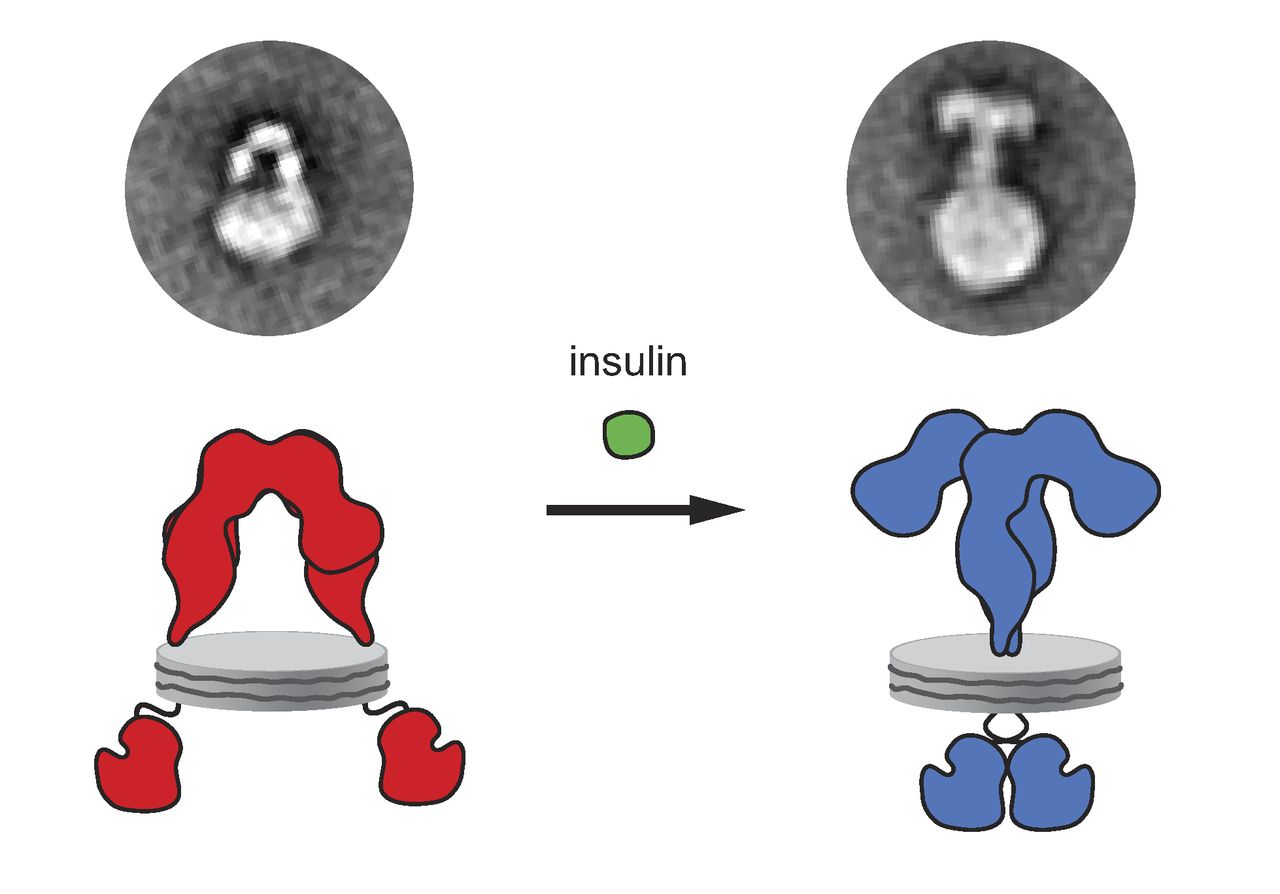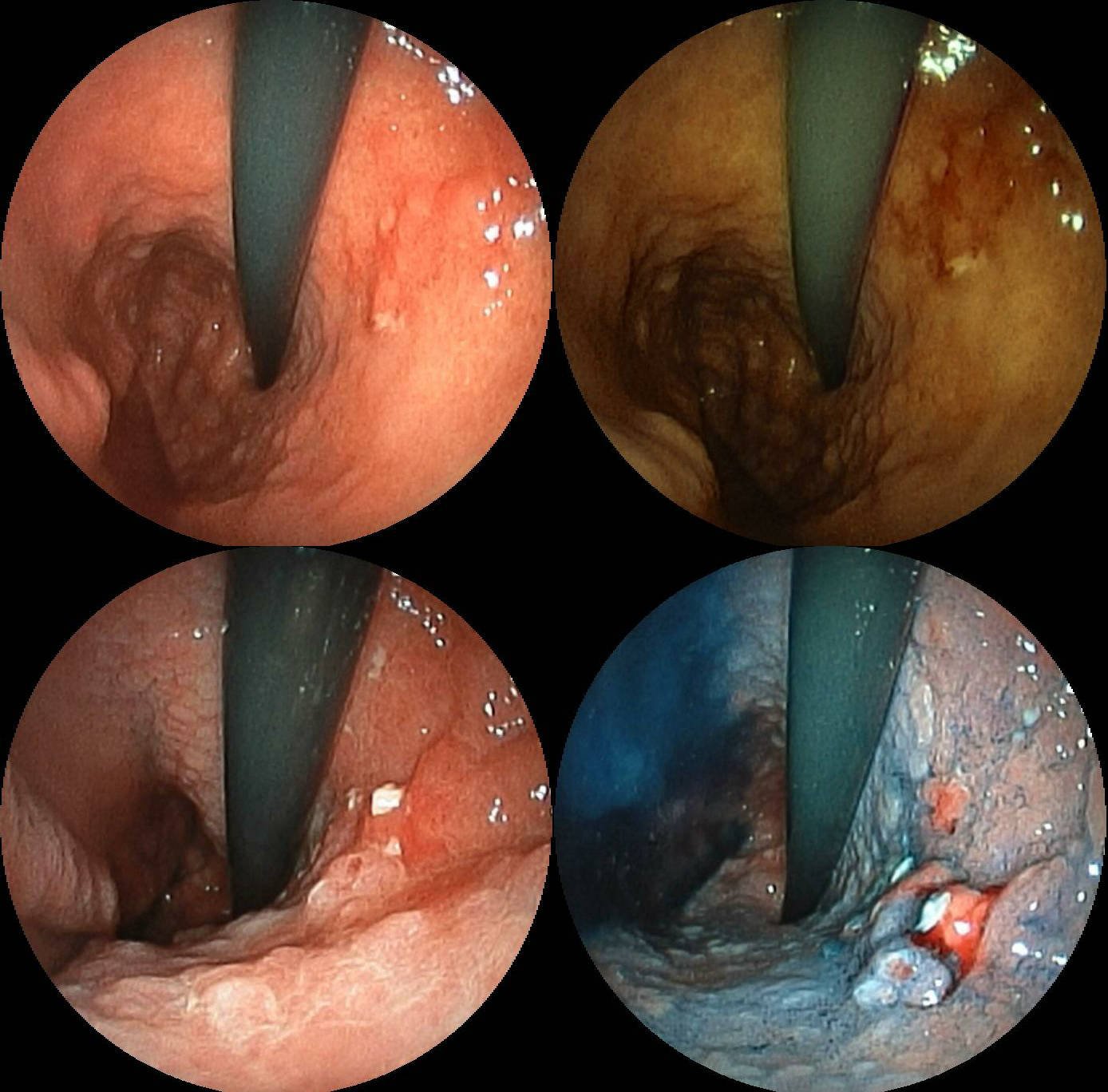|
GRB7
Growth factor receptor-bound protein 7, also known as GRB7, is a protein that in humans is encoded by the ''GRB7'' gene. Function The product of this gene belongs to a small family of Signal transducing adaptor protein, adaptor proteins that are known to interact with a number of receptor tyrosine kinases and signaling molecules. This gene encodes a growth factor receptor-binding protein that interacts with epidermal growth factor receptor (EGFR) and Eph receptor, ephrin receptors. The protein plays a role in the integrin signaling pathway and cell migration by binding with PTK2, focal adhesion kinase (FAK). Alternative splicing results in multiple transcript variants encoding different protein isoform, isoforms, although the full-length natures of only two of the variants have been determined to date. Clinical significance GRB7 is an SH2 domain, SH2-domain adaptor protein that binds to receptor tyrosine kinases and provides the intra-cellular direct link to the Ras (protein ... [...More Info...] [...Related Items...] OR: [Wikipedia] [Google] [Baidu] |
Rnd1
Rnd1 is a small (~21 kDa) signaling G protein (to be specific, a GTPase), and is a member of the Rnd subgroup of the Rho family of GTPases. It is encoded by the gene RND1. It contributes to regulating the organization of the actin cytoskeleton in response to extracellular growth factors (Nobes et al., 1998). upplied by OMIMref name="entrez" /> Interactions Rnd1 has been shown to interact with GRB7, PLXNB1 Plexin B1 is a protein of the plexin family that in humans is encoded by the ''PLXNB1'' gene. Function Within neural tissues, the plexin A plexin is a protein which acts as a receptor for semaphorin family signaling proteins. It is classic ..., PDE6D, ARHGAP5 and UBXD5. References Further reading * * * * * * * * * * * {{gene-12-stub ... [...More Info...] [...Related Items...] OR: [Wikipedia] [Google] [Baidu] |
Chromosome 17 (human)
Chromosome 17 is one of the 23 pairs of chromosomes in humans. People normally have two copies of this chromosome. Chromosome 17 spans more than 84 million base pairs (the building material of DNA) and represents between 2.5 and 3% of the total DNA in cells. Chromosome 17 contains the Homeobox B gene cluster. Genes Number of genes The following are some of the gene count estimates of human chromosome 17. Because researchers use different approaches to genome annotation their predictions of the number of genes on each chromosome varies (for technical details, see gene prediction). The most conservative estimate, from CCDS, represents a lower bound on the total number of human protein-coding genes. Gene list The following is a partial list of genes on human chromosome 17. For complete list, see the link in the infobox on the right. The following are some of the genes and their corresponding Cytogenetic location on chromosome 17: p-arm q-arm Diseases and disord ... [...More Info...] [...Related Items...] OR: [Wikipedia] [Google] [Baidu] |
RET Proto-oncogene
The ''RET'' proto-oncogene encodes a receptor tyrosine kinase for members of the glial cell line-derived neurotrophic factor (GDNF) family of extracellular signalling molecules. ''RET'' loss of function mutations are associated with the development of Hirschsprung's disease, while gain of function mutations are associated with the development of various types of human cancer, including papillary thyroid carcinoma, multiple endocrine neoplasias type 2A and 2B, pheochromocytoma and parathyroid hyperplasia. Structure ''RET'' is an abbreviation for "rearranged during transfection", as the DNA sequence of this gene was originally found to be rearranged within a 3T3 fibroblast cell line following its transfection with DNA taken from human lymphoma cells. The human gene ''RET'' is localized to chromosome 10 (10q11.2) and contains 21 exons. The natural alternative splicing of the ''RET'' gene results in the production of 3 different isoforms of the protein RET. RET51, RET43 and R ... [...More Info...] [...Related Items...] OR: [Wikipedia] [Google] [Baidu] |
Insulin Receptor
The insulin receptor (IR) is a transmembrane receptor that is activated by insulin, IGF-I, IGF-II and belongs to the large class of receptor tyrosine kinase. Metabolically, the insulin receptor plays a key role in the regulation of glucose homeostasis; a functional process that under degenerate conditions may result in a range of clinical manifestations including diabetes and cancer. Insulin signalling controls access to blood glucose in body cells. When insulin falls, especially in those with high insulin sensitivity, body cells begin only to have access to lipids that do not require transport across the membrane. So, in this way, insulin is the key regulator of fat metabolism as well. Biochemically, the insulin receptor is encoded by a single gene , from which alternate splicing during transcription results in either IR-A or IR-B isoforms. Downstream post-translational events of either isoform result in the formation of a proteolytically cleaved α and β subunit, which up ... [...More Info...] [...Related Items...] OR: [Wikipedia] [Google] [Baidu] |
EPH Receptor B1
Ephrin type-B receptor 1 is a protein that in humans is encoded by the ''EPHB1'' gene. Function Ephrin receptors and their ligands, the ephrins, mediate numerous developmental processes, particularly in the nervous system. Based on their structures and sequence relationships, ephrins are divided into the ephrin-A (EFNA) class, which are anchored to the membrane by a glycosylphosphatidylinositol linkage, and the ephrin-B (EFNB) class, which are transmembrane proteins. The Eph family of receptors are divided into 2 groups based on the similarity of their extracellular domain sequences and their affinities for binding ephrin-A and ephrin-B ligands. Ephrin receptors make up the largest subgroup of the receptor tyrosine kinase (RTK) family. The protein encoded by this gene is a receptor for ephrin-B family members. Interactions EPH receptor B1 has been shown to interact with: * ACP1 * GRB7 and * NCK1 * Ephrin-B2 Ephrin-B2 is a protein that in humans is encoded by the ''EFNB2 ... [...More Info...] [...Related Items...] OR: [Wikipedia] [Google] [Baidu] |
Epidermal Growth Factor Receptor
The epidermal growth factor receptor (EGFR; ErbB-1; HER1 in humans) is a transmembrane protein that is a receptor (biochemistry), receptor for members of the epidermal growth factor family (EGF family) of extracellular protein ligand (biochemistry), ligands. The epidermal growth factor receptor is a member of the ErbB, ErbB family of receptors, a subfamily of four closely related receptor tyrosine kinases: EGFR (ErbB-1), HER2/neu (ErbB-2), ERBB3, Her 3 (ErbB-3) and Her 4 (ErbB-4). In many cancer types, mutations affecting EGFR expression or activity could result in cancer. Epidermal growth factor and its receptor was discovered by Stanley Cohen (biochemist), Stanley Cohen of Vanderbilt University. Cohen shared the 1986 Nobel Prize in Medicine with Rita Levi-Montalcini for their discovery of growth factors. Deficient signaling of the EGFR and other receptor tyrosine kinases in humans is associated with diseases such as Alzheimer's, while over-expression is associated with th ... [...More Info...] [...Related Items...] OR: [Wikipedia] [Google] [Baidu] |
PTK2
PTK2 protein tyrosine kinase 2 (PTK2), also known as focal adhesion kinase (FAK), is a protein that, in humans, is encoded by the ''PTK2'' gene. PTK2 is a focal adhesion-associated protein kinase involved in cellular adhesion (how cells stick to each other and their surroundings) and spreading processes (how cells move around). It has been shown that when FAK was blocked, breast cancer cells became less metastatic due to decreased mobility. Function The PTK2 gene encodes a cytosolic protein tyrosine kinase that is found concentrated in the focal adhesions that form among cells attaching to extracellular matrix constituents. The encoded protein is a member of the FAK subfamily of protein tyrosine kinases that included PYK2, but lacks significant sequence similarity to kinases from other subfamilies. It also includes a large FERM domain. With the exception of certain types of blood cells, most cells express FAK. FAK tyrosine kinase activity can be activated, which plays a k ... [...More Info...] [...Related Items...] OR: [Wikipedia] [Google] [Baidu] |
SH2 Domain
The SH2 (Src Homology 2) domain is a structurally conserved protein domain contained within the Src oncoprotein and in many other intracellular signal-transducing proteins. SH2 domains bind to phosphorylated tyrosine residues on other proteins, modifying the function or activity of the SH2-containing protein. The SH2 domain may be considered the prototypical modular protein-protein interaction domain, allowing the transmission of signals controlling a variety of cellular functions. SH2 domains are especially common in adaptor proteins that aid in the signal transduction of receptor tyrosine kinase pathways. Structure and interactions SH2 domains contain about 100 amino acid residues and exhibit a central antiparallel β-sheet centered between two α-helices. Binding to phosphotyrosine-containing peptides involves a strictly-conserved Arg residue that pairs with the negatively-charged phosphate on the phosphotyrosine, and a surrounding pocket that recognizes flanking seque ... [...More Info...] [...Related Items...] OR: [Wikipedia] [Google] [Baidu] |
HER2/neu
Receptor tyrosine-protein kinase erbB-2 is a protein that normally resides in the membranes of cells and is encoded by the ''ERBB2'' gene. ERBB is abbreviated from erythroblastic oncogene B, a gene originally isolated from the avian genome. The human protein is also frequently referred to as HER2 (human epidermal growth factor receptor 2) or CD340 ( cluster of differentiation 340). HER2 is a member of the human epidermal growth factor receptor (HER/EGFR/ERBB) family. But contrary to other members of the ERBB family, HER2 does not directly bind ligand. HER2 activation results from heterodimerization with another ERBB member or by homodimerization when HER2 concentration are high, for instance in cancer. Amplification or over-expression of this oncogene has been shown to play an important role in the development and progression of certain aggressive types of breast cancer. In recent years the protein has become an important biomarker and target of therapy for approximately 30% ... [...More Info...] [...Related Items...] OR: [Wikipedia] [Google] [Baidu] |
Stomach Cancer
Stomach cancer, also known as gastric cancer, is a malignant tumor of the stomach. It is a cancer that develops in the Gastric mucosa, lining of the stomach. Most cases of stomach cancers are gastric carcinomas, which can be divided into a number of subtypes, including gastric adenocarcinomas. Lymphomas and mesenchymal tumors may also develop in the stomach. Early symptoms may include heartburn, upper abdominal pain, nausea, and Anorexia (symptom), loss of appetite. Later signs and symptoms may include weight loss, jaundice, yellowing of the skin and whites of the eyes, Hematemesis, vomiting, Dysphagia, difficulty swallowing, and Melena, blood in the stool, among others. The cancer may metastasis, spread from the stomach to other parts of the body, particularly the liver, lungs, bones, peritoneum, lining of the abdomen, and lymph nodes. The bacterium ''Helicobacter pylori'' accounts for more than 60% of cases of stomach cancer. Certain strains of ''H. pylori'' have greater risk ... [...More Info...] [...Related Items...] OR: [Wikipedia] [Google] [Baidu] |
Esophageal Cancer
Esophageal cancer (American English) or oesophageal cancer (British English) is cancer arising from the esophagus—the food pipe that runs between the throat and the stomach. Symptoms often include dysphagia, difficulty in swallowing and weight loss. Other symptoms may include odynophagia, pain when swallowing, a hoarseness, hoarse voice, Lymphadenopathy, enlarged lymph nodes ("glands") around the clavicle, collarbone, a dry cough, and possibly hemoptysis, coughing up or hematemesis, vomiting blood. The two main Histopathology, sub-types of the disease are esophageal squamous-cell carcinoma (often abbreviated to ESCC), which is more common in the developing world, and esophageal adenocarcinoma (EAC), which is more common in the developed world. A number of less common types also occur. Squamous-cell carcinoma arises from the squamous epithelium, epithelial cells that line the esophagus. Adenocarcinoma arises from glandular cells present in the lower third of the esophagus, ofte ... [...More Info...] [...Related Items...] OR: [Wikipedia] [Google] [Baidu] |



